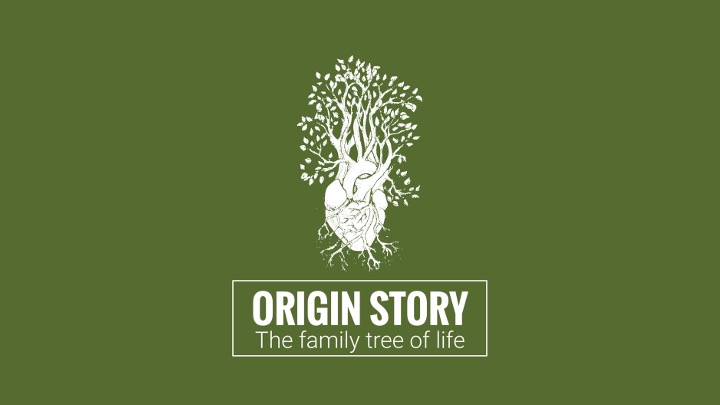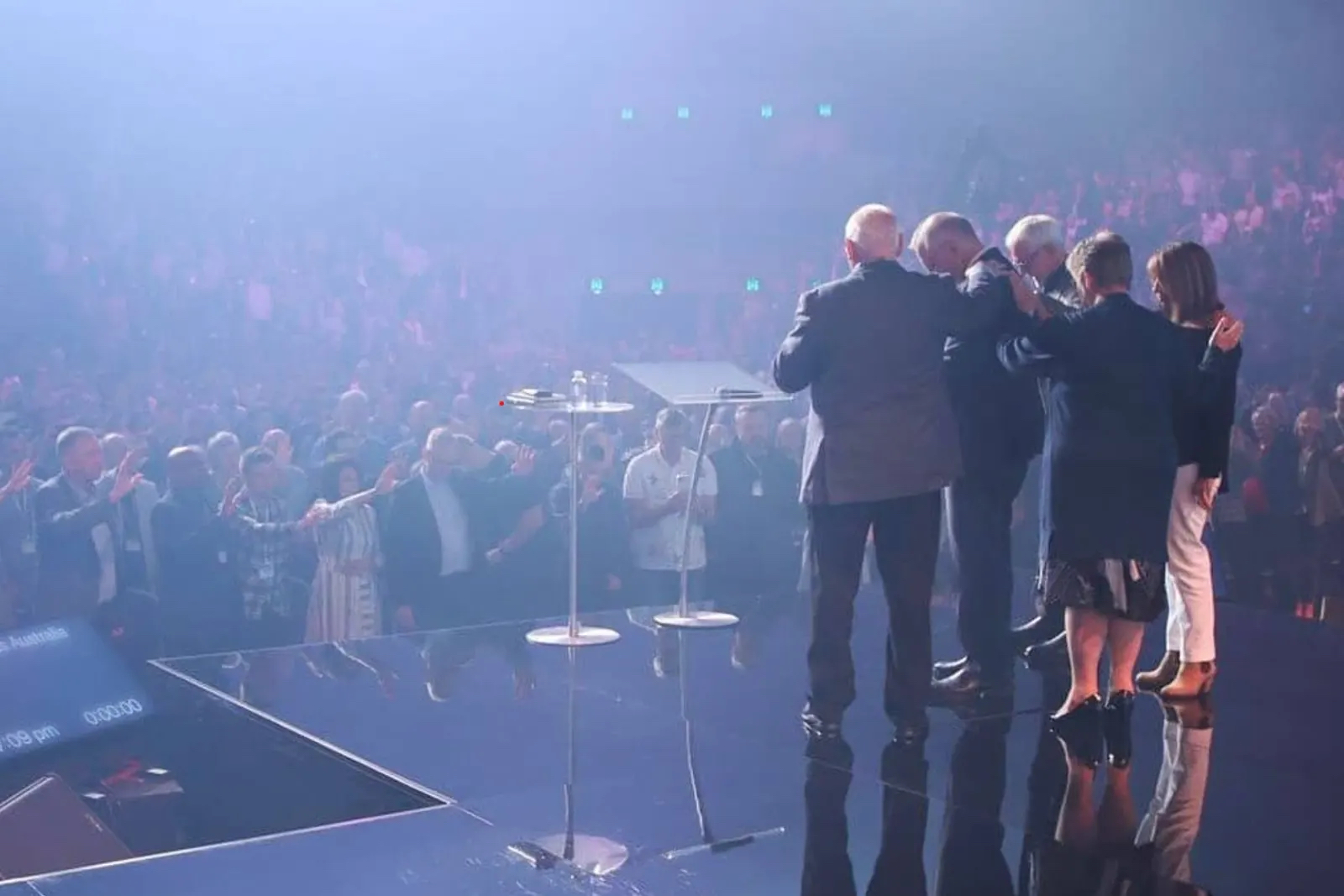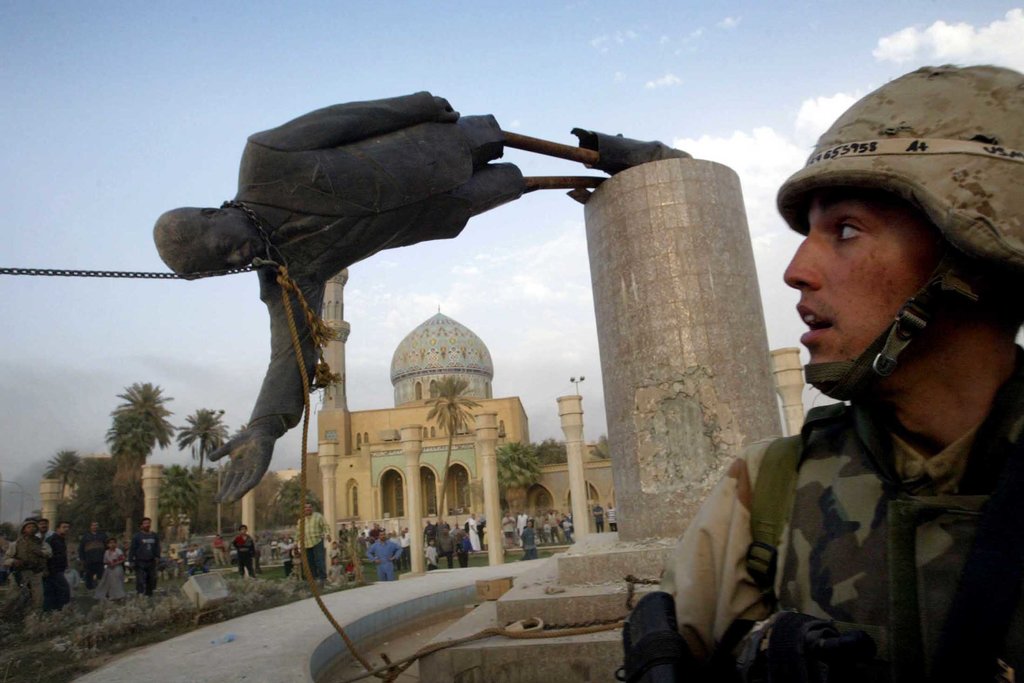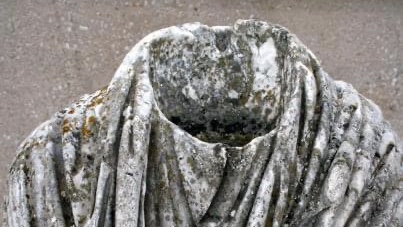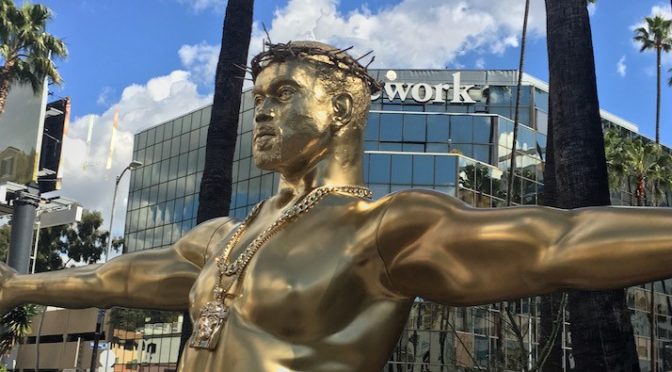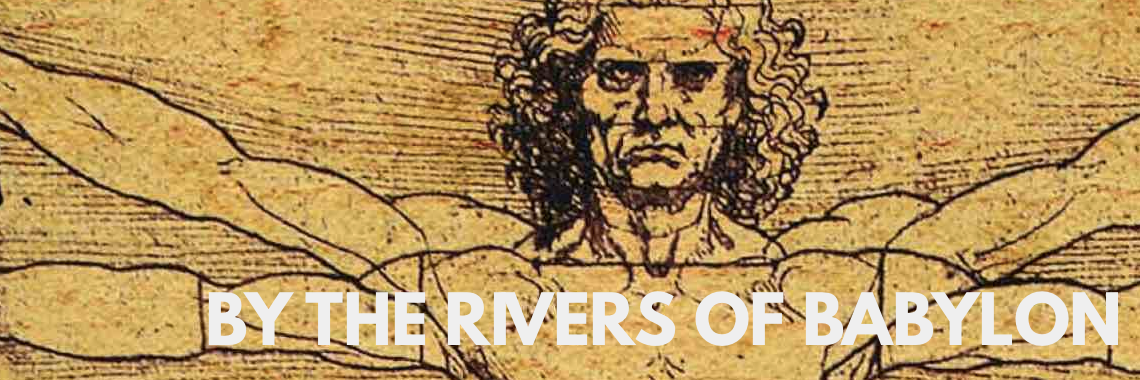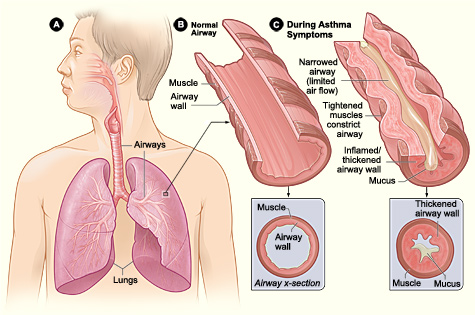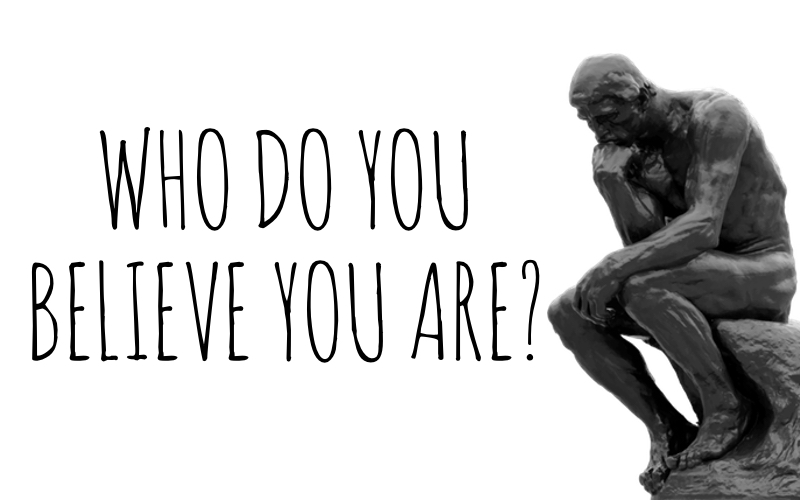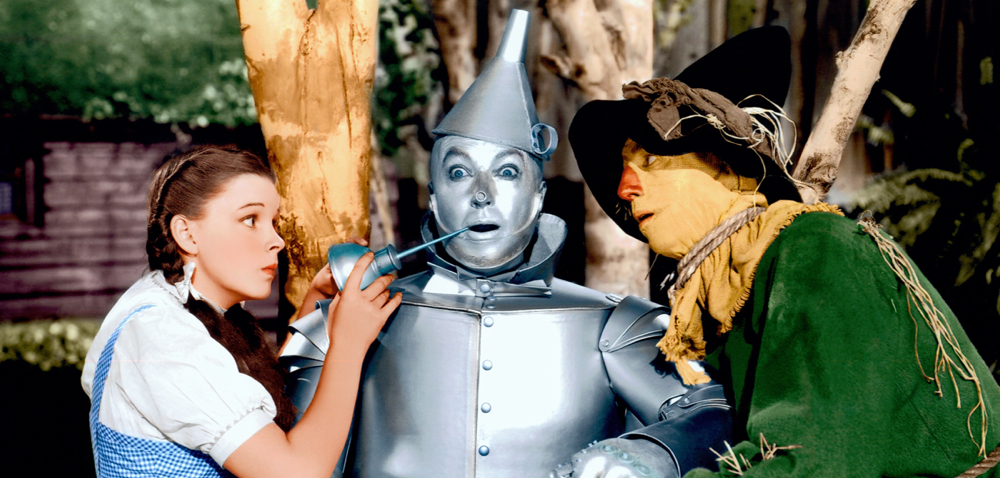This is an amended (and extended) version of a sermon I preached at City South Presbyterian Church in 2022. If you’d prefer to listen to this (spotify link), or watch it on a video, you can do that. It runs for 40 minutes.
What does heaven on earth look like for you?
Where do you feel closest to God?
Journalist Eric Weiner came up with this idea ‘thin places’ in a travel article for the New York Times in 2011. They made it into his book about his search for God as a secular 21st century Jewish man…
Thin places are:
“where the distance between heaven and earth collapses and we’re able to catch glimpses of the divine, or the transcendent or… The infinite whatever.”
Where do you go to feel closest to God — like you’re in a heaven on earth zone? A thin place?
That’s what the Garden in Eden was — this paradise garden we read about in Genesis 2. It maybe shows us that all our thin place experiences are a longing for somewhere else. I love the way Tolkien puts this:
“Certainly there was an Eden on this very unhappy earth. We all long for it, and we are constantly glimpsing it: our whole nature at its best and least corrupted, its gentlest and most humane, is still soaked with the sense of ‘exile.”
In those thin places we feel closest to God — and while we do live with this sense of paradise lost — these moments might be explained by our origin story, and they might point to an ending of the story.
What would an ideal person in that thin place should look like?
What should they do to cultivate that sense of heaven?
How might they be shaped by the space? Just ponder that with your own pictures of paradise.
Genesis 2 develops some big ideas from Genesis 1 — covering the same creation of the heavens and the earth — while zeroing in on a more local place — this region called Eden, and within it, a garden. And zeroing in on just one human. A human named human, or a human named to sound like ground in the Hebrew language. Adam; Earthling. What we treat as a name — Adam — is really, first and foremost, a pun.
Before we get this human we get a world that is desolate and uninhabited — there are no plants yet, and no rain yet, and no one to work the ground yet (Genesis 2:4-5). There’s also no deep — no dark or chaotic waters in the way. There is earth. Ground. And springs of water that come up from the ground to give life (Genesis 2:6).
In the Babylonian view of the world — which we touched on last time — there’s two ‘cosmic waters’ going on in our map of reality — Tiamet — the bad salty water that doesn’t help things grow — and Apsu, the living water — fresh springwater that comes up through the earth.
That’ll be interesting… If you can keep it in your head as you read.
In the Bible’s story though, the life-giving water bubbles up as the way God brings water to the parched ground — water and life. If you’re an ancient person — or even a modern one — water was a source of life through farming; you’d build cities on rivers to guarantee water supply for people. And here these waters are bubbling up out of the ground.
Next to these waters, God makes a human. He forms the man — shapes him — from the dust of the ground and then breathes the breath of life into his nostrils. And he becomes a living being (Genesis 2:7). Here’s another little thread to hold on to — in the Greek Old Testament (the LXX) this is translated as a “living soul” using the Greek word psyche (from which we get ‘psychology’).
Now. Remember in Genesis chapter 1, we’re told God creates people in his own image, and I said that word is the word that gets used for idol statues and for kings in the ancient world. There’s a fascinating thing going on here where this story of God creating a living image of himself mirrors — or inverts and challenges — the exact story that people in the ancient world, outside of Israel, believed about how idol statues were made.
To make an idol statue in the ancient world — or to restore one after it’d been taken out of your temple by your enemies — according to a couple of different ancient records — you’d go through this ritual where you’d fashion and form the statue (note: this is called the Mîs-pî ritual, this cracking book by Catherine McDowell does good scholarly work on links between these ancient rituals and Genesis; something I’ve written about before both here and in my thesis).
Here’s some quotes from a translated ritual tablet, this process required:
Water of the Apsû, brought from the midst of Eridu, water of the Tigris, water of the Euphrates, brought from a pure place… in the garden of the canal of the pure orchard build a bīt rimki. Bring him [the statue] out to the canal of the pure orchard…or this statue which stands before you ceremoniously grant him the destiny that his mouth may eat, that his ears might hear. May the god become pure like heaven, clean like the earth, bright like the center of heaven.
They would place a statue in an orchard, surrounded by the waters of the Tigris and Euphrates (rivers mentioned flowing from Eden in Genesis 2), and the water of the Apsu — the living water the bubbles up from the ground.
They would “give life” to the statue through a ritual that involved washing out the mouth, so that in the people’s minds the statue was now a living, breathing, eating, representation of the god in the world; then you would place them in a temple. You’d rinse and repeat this process for all the images of your god that you’d spread around the empire, then everyone involved in the ceremony would have to pretend to cut off their hands with a wooden knife because no real god could be created by humans.
It was especially the King’s job to build these statues to spread the images of an empire’s god throughout the parts of the world where their gods reigned. There’s another description of this ritual where a king, Esarhaddon, re-built Babylon after his dad destroyed it. He gets a few mentions in the Old Testament (2 Kings 19:37, Ezra 4:2, Isaiah 37:38). He repaired statues that had been removed from the temples — ‘restoring’ the gods to these desecrated statues by re-creating them.
He said he was chosen by Babylon’s gods to make images of god and put them in Babylon’s temples.
He took these exiled statues that had been captured by his dad and pulled out of their temples back to an orchard, surrounded by waters (the Euphrates river ran through Babylon), and conducted those same rituals to give life to these statues; these images of god.
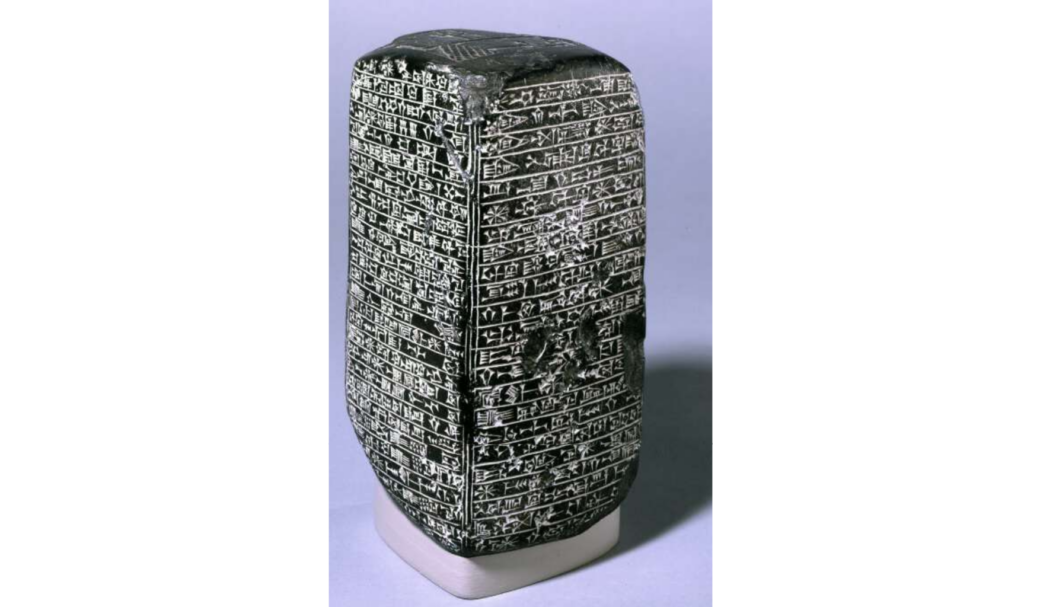
Image source: Record of Esarhaddon’s restoration of Babylon, British Museum
Here’s a translation of the inscription from this tablet.
I, Esarhaddon, led the great god in procession. I processed with joy before him. I brought him joyfully into the heart of Babylon, the city of their honour. Into the orchards, among the canals…
The line between God and king was murky. Kings were also called the image of God. There’s a king of the region that became Assyria, Tukulti Ninurta, who has these inscriptions that call him the image of the god, Enlil. These inscriptions using the same letters the Hebrew word for ‘image’ uses (tselem, or צלם). Eventually kings in the Ancient world ended up having statues of themselves placed in temples around their kingdoms.
There was no separation of church and state in the ancient world — the king was chief priest — the image of their god’s rule in the world.
So through Israel’s history, as they retell this Eden story it’s an alternative origin story — it’s not their king making an image of God — a statue — in a fruitful garden where the waters of the Tigris and Euphrates flow — where the image is given life because his mouth is opened by people washing it. A story told before the same people turn round and worship the statues they just helped make. Israel’s story is that their God makes his own statue-man with his hands, and puts him in an orchard where living water flows all round, and breathes actual life into his image so it can eat and live.
There’s a mirror being held up to these foreign stories and the gods they present, just as the story reveals how God sees humans as his Sacred, divinely formed representatives — living, breathing, statues. Royal rulers.
Imagine the way this story played out in their life with these nations as neighbours — or as their conquerers in Egypt, or in Babylon. Humans are god’s living images — so, unlike their neighbours — Israel shouldn’t make statues of god — and we see that in the law (like in the 10 Commandments, Exodus 20). Worshipping those statues that they know are breathless and dead would be dumb, they have no breath in them, they are dead, and we see that in the prophets and Psalms.
The prophets — like Isaiah — even mock the whole process of constructing an idol statue that we now read in these rituals. Where craftsmen shape wood into human form, to put it in a temple, while burning the same wood to cook their food (Isaiah 44:13-15).
The Genesis Origin story shows why worshipping idols is stupid. They’re breathless, uninspired pieces of stone and wood; dirt-gods that leave us with a dirt future.
While the living God shows us that real humanity has life by his breath. We weren’t made to stay as earthlings — like statues of wood or clay — but to live as people who reflect heaven on earth; inspired by divine breath, as we enjoy life in God’s presence. Inspired. That’s a cool word, right (as opposed to ‘expired’). We’re given breath by him so that we might create life shaped by him rather than making our own gods; living as heavenly people, not people who worship stuff from the ground; but the God of heaven.
Ancient Idol statues were made from the ground (dirt or stone) and garden (trees), then decorated with the gold and precious stones that are there in the ground in the regions around Eden waiting to be cultivated and used by God’s earth-man in his task of representing god (Genesis 2:11-12). We can worship that stuff; or we can cultivate it and use it in our God-given task Some of the precious resources mentioned here in Genesis 2 — gold and onyx — become part of the clothing of the priest (Exodus 28).
Let’s pop back to Babylon, or another ancient city for a moment — in these cities the kings — images of God — who crafted images of Marduk the violent god to send out into the world, these kings were also gardeners. If you were an exiled Israelite it’s not just the power of Babylon’s armies that confronts you, and offers an appeal to switch allegiance to Marduk or his king — it’s the beauty of the city. The gardens. The king, as representative of divine order, was understood to be responsible for the fruitfulness of their lands. They’d plant gardens — thing the famed Hanging Gardens of Babylon; they would build garden cities on rivers — like the Tigris, or Euphrates. Israel in Babylon doesn’t just have God’s command to plant gardens of their own (Jeremiah 29:5-7), little Edens in Babylon, they’ve got a different story about who brings fruitfulness into the world; the God who plants a garden.
God is the gardener (Genesis 2:8). He brings the fruit. This is what Israel gets told about the fruitfulness of the promised land too. But in the Eden story it’s God who provides fruitfulness — in the form of trees that are pleasing to the eye and good for food, and the tree of life is there too (Genesis 2:9).
He gives human — earthling — the job of working and taking care of the Garden, as a steward of his fruitful provision of trees and life; of this garden space that is somehow marked out as different to the rest of the earth (Genesis 2:15). The word work or cultivate is the word for serve… while the word behind ‘take care of’ has a sense of guard — it’s the same word for what the cherub with the sword is going to do to guard the garden when Adam and Eve get kicked out (Genesis 3:24).
Now these two words get paired together a bunch of times as the instructions for the priests; in the Tabernacle in Numbers (Numbers 3:7), and then the Temple in Chronicles (Chronicles 23:32). They’re the task of God’s priests in these thin places where we see Heaven and earth intersecting. God’s priests are like living idol statues —images —. tasked with guarding and keeping the heaven-on-earth spaces, and that’s the task we find for all humans in Genesis 2… In the Garden in Eden.
Now these two words — they’re the same words used over and over again as instructions for the priests; in the tabernacle in numbers, and then temple in chronicles. They’re the task of god’s fruitful people in the fruitful land in thin places where we see heaven and earth intersecting…
Think back to your thin place, and that little exercise of imagining how you should live in that thin place to keep it doing that job — if it was a beach, you’d be wanting to preserve the water quality, and stop it becoming overcrowded — you’d clean and protect it. If it’s a mountain, you’d stop people building ugly stuff like ziplines or awful houses, and you’d pick up rubbish. If it’s a garden then you’d cultivate it, looking after the trees, and you’d guard it from outside pests and weeds. This is basically what Earthling (Adam) is told to do in this heaven on earth space — keep it doing that job.
Earthling Adam is to enjoy God’s hospitality while he works — to enjoy with God, feasting on all the trees including the Tree of Life — living for as long as he enjoys life in God’s presence — while contemplating this other tree — this tree he is not to eat from; the Tree of Knowledge of Good and Evil (we’ll see more of it next week. But for now we’ll leave it hanging like Chekov’s rifle).
It’s worth noticing that the streams emerging from the ground at the start of the chapter have become rivers (Genesis 2:10-14) flowing from Eden; this water of life flows from Eden out into the world giving life to all these nations that end up, in the story of the Bible, being Israel’s idol-loving enemies. Life flows out of this garden and into the world.
The origin story so far introduces us to Earthling; the living idol statue made from the ground, given life by God’s breath, to represent the fruitful living, breathing, life-giving God. Earthling is created to be fruitful and multiply, to fill the earth and rule it for God by gardening — cultivating and guarding this garden — partnering with God in this work of spreading the garden paradise — where God gives life at his table (or trees) — across the earth as God’s living statue; his priestly king. Genesis 2 unpacks the Genesis 1 idea of humans being made in God’s image, and in Israel’s story (unlike Babylon’s) this role is for all humans living in relationship with God, not just for kings.
And not just for men.
Just as the darkness, chaos waters, and vault were problems introduced by the narrative — so is earthling being alone; we know something is missing from his image bearing capacity. There’s a barrier to earthling’s fruitfulness. In Genesis 1, over and over again, we’re told ‘it’s good’ — but here it’s ‘not good’ — because earthling Adam is alone (Genesis 2:18).
We see a bit of his life in God’s likeness here too; because where in chapter one, God names things and they happen — in chapter two, as earthling meets the animals, whatever he calls them — that’s their name (Genesis 2:19). He’s ruling over the animals and birds, who Genesis 1 says males and females — God’s image — are to rule together. There’s an interesting difference between chapter 1 and 2 here too, where the animals have also been created out of the ground — like the earthling — we’re not told that in Genesis 1; they also have the “breath of life” in them (Genesis 1:30), they are similar, but are not made with this task of representing God in the world and ruling over it.
They’re similar, but none of them are suitable for him as a helper; none of them complete earthling’s ability to do the ‘good’ he was made for. Until God makes a woman — a helper — not from the ground but from his side (Genesis 2:20-21).
It’s worth just pausing on that word “helper” in the context of this human task to be fruitful and multiply. It’d be easy, from the English (and because of history) to think the word helper is subordinate — but that’s not what the word here means, or what the narrative is suggesting. The Hebrew words used here for suitable helper — Ezer Kenegdo — don’t have a picture of a domestic helper in them at all; ‘ezer’ is more like ‘deliverer’ — it’s used of God in the Old Testament, including in military pictures of God holding a shield for Israel and coming to their aid (Deuteronomy 33:29).
Helper is something more like military ally — and her suitability is about the ability and necessity to help earthling function the way God created humanity to function together. Remember how we saw when we looked at chapter one, that in the ancient world a thing is a thing when it does what a thing is made to do. Humanity is incomplete. It can’t represent God as his image — without males and females. Earthling also can’t be fruitful and multiply alone, or make life from the earth; and so God makes a woman.
A woman taken out of man so they can be united as one — that’s going to be important for understanding what happens in chapter 3, where they fail to act as one, turning on each other, and to guard and keep the garden, so that being fruitful and multiplying is frustrated as their relationship is disordered.
The woman is the first creation — plants, humans, animals — not made from the ground in the chapter. Together, man and woman will be fit for their purpose of representing God and fruitfully spreading his rule — his Eden Garden — over the earth. Their union and oneness will be part of that representation, and so will humanity’s fruitful multiplying from their union. Adam couldn’t be fruitful and multiply alone.
This passage might become the basis for how we understand marriage — it’s where Jesus goes when asked about marriage (Matthew 19) — and it’s definitely a pretty big building block for how we think marriage works, but there’s also something happening in the origin story here. The narrative is suggests earthling is incomplete — not good — unable to function as fully human while he’s alone. This isn’t to say we’re half people waiting for a person of the opposite sex to complete us, but that God’s task of producing fruitful life in the world that represents the life-giving, generative, nature of God requires males and females… community, even. The human call to be fruitful and multiply; to fill the earth with God’s representatives anticipates the Great Commission (Matthew 28); Jesus’s call to be fruitful and multiply by making disciples.
By the end of the chapter Earthling Adam and his wife are together, in the garden, and their relationship is secure; they are naked and unashamed. Earthling has not yet named the woman, like he did the animals, he simply says she shall be called woman because she is taken out of man; the language here indicates a unity. The Hebrew word for man is “ish” and for woman it’s “ishshah.” They are united. They have a job to do. They have a heaven-on-earth place to do this job in.
So, imagine you’re an Israelite in Babylon, hearing this story. Babylon doesn’t feel like your picture of Heaven. It’s a violent and chaotic empire built around the worship of war gods like Marduk. It’s ruled by kings who’ve conquered you, and all the empires that came before; Egypt; Assyria; they’re done. It has its own picture of heaven on earth. Its male god-king is claiming to be the image of god who makes images of god. He builds his own garden city as a home for his gods. Babylon’s story (the Enuma Elish) says the city is their resting place on earth. Humans aren’t made in the image and likeness of God, they exist as slaves to the Gods, to feed them with your labour. That’s how Babylon’s creation story views heaven-on-earth space and how humans are to live in it.
As an Israelite, your own heaven-on-earth place — the Temple in Jerusalem — looks a long way away. You’re wondering if God is distant while living in a beautiful and powerful city set up as a thin place for Babylon’s gods. Statues get paraded down its streets and enshrined in its temples, its political order is religious, the architecture of the city — even its parks and gardens — are meant to make you feel like their gods are good and in control.
Genesis would be a subversive story in that sort of environment. A story that told you that you’re as valuable as the king; and images of your God, unlike theirs aren’t dead wood made with weird rituals, but living, breathing, life-making men and women. Earthlings who know we really belong; we truly flourish; somewhere like Eden; a heaven on earth place, enjoying God’s hospitality — and his gift of life; the Tree of Life. The story would create a certain hunger for that kind of place — a sense of longing for home, while also directly mocking, and challenging Babylon’s vision for humanity. This story provides the fodder for Israel’s prophets to undermine the Babylonian stories and its god statues, tipping the Babylonian picture of god and humanity on its head.
You would know, too, that your God is the source of all the life and goodness you see around you — the fruitful trees growing because of the water coming from the Euphrates are downstream from Eden. Babylon, just like the other nations your people have met with through history has been given life by the living water flowing out of God’s provision; his cosmic life-giving water bubbling away in the universe. More radically, you would be shaped to see your Babylonian neighbours as also made to worship and serve your God; the God who gives them life, who created them not to be slaves, but to represent him as pictures of his life in the world. They are captivated images — idol statues — who need restoration to the Eden story. That’s going to shape the way you treat your enemies, isn’t it? Seeing how they were made to be fruitful and multiply; spreading Eden, the real life-giving garden paradise, rather than the deadly and destructive gardens of Babylon.
We’re going to see that this story goes downhill fast; Chekov’s rifle gets fired in the next act. But this picture of heaven-on-earth doesn’t disappear through the Bible’s story even as humans are exiled from Eden.
There are echoes of Eden all over the place; built into the Tabernacle and Temple, where the Holy of Holies, the dwelling place of God is set up with tree decorations and fruit imagery everywhere; where a giant Menorah — a candlestick Tree of Life is there as a picture of life in the presence of the God who is light. Echoes of Eden are there in descriptions of the Promised Land as a land flowing with abundant goodness and provision… it’s there in the Prophet’s hope of restoration.
Ezekiel has this picture of God’s garden mountain — Eden — a meeting place between the heavens and the earth (Ezekiel 28:13-14), and a restored mountain top temple, where the waters of life flow out becoming rivers teeming with abundant life that feed the nations, restoring life — living water that creates fruit trees along the banks of this river (Ezekiel 47:1-12). It’s Eden, but better; it’s Jerusalem, but better. It’s certainly better than Babylon. It’s what God’s faithful image bearing people could have partnered with God to create.
This Ezekiel imagery is something John picks up as Jesus — the Heavenly Man — walks on earth. The man John tells us straight up is God tabernacling with his people — Edening with his people (The Greek word for “tabernacle” is the word used behind ‘dwelling’ in John 1:14). John has us read his whole Gospel through the lens of Jesus’s body being a new Temple (John 2:19-22) — he’s a heaven-on-earth human and a ‘heaven on earth place.’
The waters of life bubble up all around Jesus as he comes as the Eden-on-earth man. He says he’s come to bring living water that will satisfy a sort of existential thirst (one that comes as a result of exile from God), and provide eternal life (John 4:13-14). He says rivers of living water will flow from those who believe in him — and John makes it clear that’s about people receiving God’s Spirit so we too become like the Temples that bring life into the world from Ezekiel’s vision — human Edens (John 7:38-39). Then John describes water pouring from Jesus’s side, in Jerusalem, at his death; a new river flowing from a heaven-on-earth space — the human temple — giving life to a new humanity (John 19:34).
John tells us Jesus was both crucified and buried in a Garden (John 19:41). One of his closest friends, Mary — thinks he is the gardener (John 20:15); in a nod to Ezekiel’s vision there’s also an abundance of fish at a post-resurrection breakfast (John 21:6). This is a new Eden moment.
It’s John, too, who pictures the new heavens and new earth as a new Eden — with the Tree of Life and the rivers of living water flowing together as people enjoy life with God for eternity (Revelation 22:1-2) (also, this sort of thematic richness is why I think, despite what some scholars might say, John’s Gospel and the Revelation were written by the same author).
Tolkien is right; we did lose this Garden paradise. Our yearning for heaven on earth — our experience of longing in those thin places where the barrier between heaven and earth breaks down — testify to our exile from Eden. We were made to live with God, enjoying his gift of life forever in this sort of heaven-on-earth place, but desecration, destruction and death got in the way.
We live in our own modern Babylon; we’re surrounded by people chasing and trying to build heaven on earth; garden cities (which was, until recently, the name of a giant Westfield shopping centre in Brisbane). We live in a world that wants to experience or manufacture thin places; we want the garden without the gardener-God and his gardener-king. Eden without the presence of God isn’t Eden. It offers no life. It’s Babylon; a counterfeit Eden, with counterfeit images of counterfeit gods that lead to death; to exile from God.
Earthling Adam was a priest-king who chose dirt over glory; leading humanity up the garden path. We need a king who’ll lead us out of exile in the nations and back to the orchard so we can be restored images who represent God again. Our neighbours, too, are images of God in need of restoration; the restoration we have received through Jesus; God’s presence restored to us through living Water; his spirit. That’s what baptism is a picture of — an image-restoration ceremony. To not simply be earthlings destined for the ground, we need God’s breath; his presence; his Spirit dwelling in us so we are restored to, and restored as, the presence of God.
That’s exactly the story of the Gospel; which becomes our new origin story. The Gospel is the story of all of us being earthlings — those who didn’t just come from the earth, but worshipped the earth and the gods of our making; even other earthlings… who faced exile from God, and breathless death as a result.
Here’s a cool thing Paul does with the Genesis story — about earthling Adam — in 1 Corinthians. And part of what’s cool is I think there’s a pun. The word “icon” is the Greek word for image; there’s an ending for Greek words “icon” that just means “of the” — they’re not directly related, but it looks the same in writing and would probably sound the same. Paul talks about how humans were — like Adam — breathed icons — where we read this bit of 1 Corinthians 15 as “natural” it’s the Greek word ‘psycheikon’ (psyche was that word used back in Genesis in the LXX). We were people given the breath of God to live in these earth bodies; earthlings. But in Jesus we find a new humanity — a Heavenly humanity — Jesus is a heavenly — or ‘pneumaticon’ — that’s the word for Spirit (1 Corinthians 15:45-46). In Jesus we’re no longer just earthlings, destined to become earth, but heavenly creatures destined for imperishable life in heavenly bodies that don’t die, that reflect God’s glory (1 Corinthians 15:47-48). Paul says just as we bore the image of the earthly man (the earthling), so, those of us who have received God’s Spirit will bear the image of the heavenly man (1 Corinthians 15:49). In Jesus we become heaven-on-earth places filled with the presence of God; his Spirit; so we might fill the earth with his presence.
There are lots of places you might feel close to God; thin places; eden zones; heaven-on-earth spots, and when you’re in those places they’re a reminder of this story — where we came from, and where we’re headed, but maybe there’s actually no place that you should feel closer to God, or more like a heaven-on-earth “Eden” place than as we gather together with God’s image bearing people to worship him and proclaim the hope of the Gospel together; sharing God’s hospitality at his table eating bread, made from grain that comes from the ground, and drinking the cup, made from grapes, grown from the ground, as we remember the life of the new human given for us, and to us, so that we might receive God’s Spirit and live in his presence forever as his representatives in the world.
